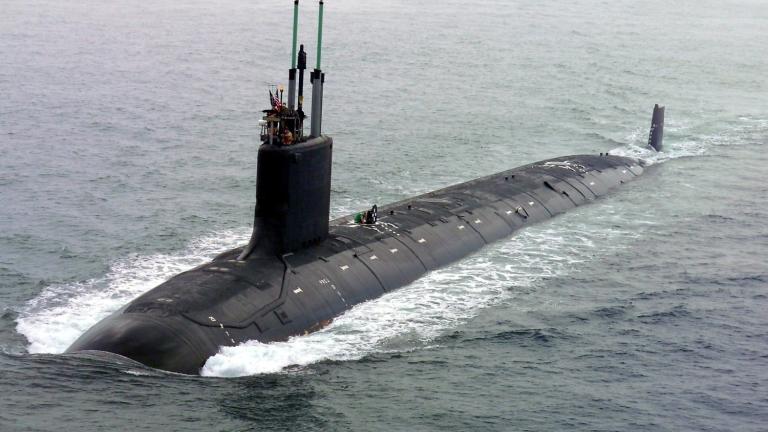
In 2021, the United States, United Kingdom, and Australia formed a partnership, dubbed AUKUS, which will allow the Royal Australian Navy to purchase several nuclear-powered submarines in an effort to modernize their fleet.
Building a nuclear submarine program from scratch is anything but easy, but when they set out to do so, the Australian navy knew exactly who to turn to for expertise. Shortly after the announcement, Australian Vice Admiral Jonathan Mead in an interview suggested sending staff to MIT.
That offhand comment eventually found its way to Jacopo Buongiorno, professor of nuclear science and engineering and director of the Center for Advanced Nuclear Energy Systems at MIT, and served as inspiration for the newest executive education course offered by the Department of Nuclear Science and Engineering (NSE).
A deep dive on nuclear programs
Titled “Nuclear Technology for Marine Propulsion,” the three-week course was attended by 20 senior leaders from the Australian Submarine Agency (ASA) and other officials, and covered a broad range of topics, including the basics of nuclear reactor theory and design, operations and safety, training, the operation of nuclear shipyards, and more.
“NSE is truly excited for the opportunity to help the Australian navy as they navigate the establishment of their nuclear program,” says Benoit Forget, NSE department head and Korea Electric Power Professor of Nuclear Engineering, who co-directed the course. “Understanding the technology and establishing foundational safety principles is essential to the long-term success of their project, and we were glad to see the importance they attributed to these principles by seeking our help.”
Sessions were led by MIT faculty and a variety of external subject matter experts and included special guests like MIT Vice President for Research Maria Zuber and retired U.S. Navy admirals Jim Ellis and John Richardson.
“The technical content of the course was rich,” Buongiorno says. “We started with nuclear physics, reactor physics, thermal-hydraulics, nuclear materials, fuel performance, and the nuclear fuel cycle, and then expanded into what one might call the ‘softer’ aspects of nuclear technology, such as training, oversight, safety culture, supply chain, the role of the national labs, etc.”
In fact, these aspects are not soft at all, Buongiorno explains, as they can determine whether a nuclear technology program succeeds or fails.
“This is one of the great lessons from the successful nuclear naval propulsion program in the U.S.,” he says. “It’s about the technology, the people, and the governance in equal parts.
“For example, in-depth training of people and the creation of a robust safety culture are critically important because nuclear reactors are not a particularly tolerant technology,” he continues. “Hence the need for relentless attention to detail and conservative decision-making. Therefore, we felt from the very beginning that this should not be a purely technical course.”
A long history of professional education
While it is the newest professional education course offered by NSE, the ASA course was modeled after another course, called “Reactor Technology Course for Nuclear Utility Executives,” which the department has offered for more than three decades, jointly with the Institute of Nuclear Power Operations. In both cases, Buongiorno says, the goal is to ensure participants come away with a basic understanding of nuclear technology, feel confident to ask smart questions, and make the right decisions in their respective positions.
Given the important future roles of the course participants — many were senior leaders in the Australian navy, government, and policy community — the course may end up having significant impacts, he adds.
“The Australian navy course is one more recent example of the international involvement and impact of my NSE colleagues,” Forget says. “Two additional recent examples are the Global Forum Rising Stars Workshop, in collaboration with the Nuclear Energy Agency, that brought together incredible female researchers from around the world, and the 2023 David J. Rose Lecture given by International Atomic Energy Agency (IAEA) Director General Mariano Grossi, who discussed the role of the IAEA on global nuclear safety.”
Providing such executive education, Buongiorno says, is central to MIT NSE’s mission. In addition to courses for the ASA and utility executives, the department in recent years launched a three-day course for policymakers, legislators, journalists, and others, titled Nuclear Energy: Facts and Issues, has offered a course on Nuclear Operational Risk Management for a decade, and its longest-running course, on Nuclear Plant Safety, has been offered annually since 1966.
“The mission of our department is not limited to technology development and education of our students. It includes also informing the broader community of stakeholders in the media, the government, the industry, the investment community, all the way to the general public, about the beneficial uses of nuclear science and technologies,” he says.






